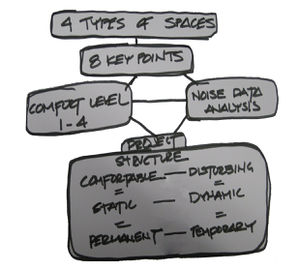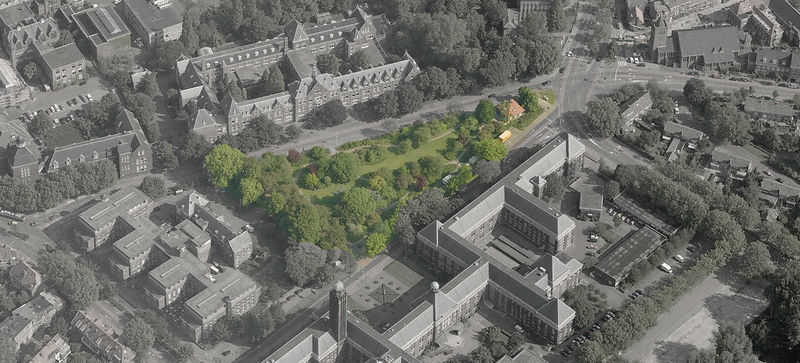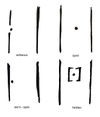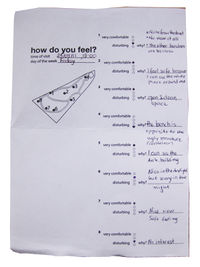atom03:Site
| (46 intermediate revisions by 4 users not shown) | |||
| Line 1: | Line 1: | ||
| − | [[Image:For_intro.jpg|center| | + | [[Image:For_intro.jpg|center|800px| ]] |
| − | + | ''' | |
| − | + | <center> [[atom03: images | images ]] | [[atom03: analysis| analysis]]''' </center>''' | |
| − | + | ||
| − | + | ||
| − | + | ||
| + | |||
| + | [[Image:Atom3spaces.jpg|thumb|right |100px|categories ]]The De Vries van Heystplantsoen site has a strong natural character. Unlike its surroundings, it is not artificial and is a rare and powerful urban typology in Delft. It is an isolated site and its [[atom03: introversion|introversion]] is stressed by the plantation barrier on the periphery. However once inside, we experienced a variety of areas with a distinctive character, and categorized them based on their relationship with the borders. | ||
| + | |||
| + | |||
| + | |||
| + | |||
| + | |||
| + | |||
| + | |||
| + | |||
| + | '''Problem | ||
| + | ''' | ||
| + | |||
| + | By means of [[atom03: personal observation]] and [[atom03: interviews]] ,we realized that [[atom03: noise]],caused mostly by traffic, is affecting the site. | ||
| + | It is also obvious that the park is lacking programmatic definition, the [[atom03: entrances]] are uninviting and are not [[atom03: strategically]] placed. This results in many inhabitants, students and staff refraining from visiting the park. | ||
| + | |||
| + | |||
| + | <br style="clear: both; height: 0; line-height: 0; font-size: px; /*for IE*/"/> | ||
| + | |||
| + | <div style="float: left; width: 300px; margin-right:40px; text-align:left"> | ||
| + | |||
| + | '''Step 1 | ||
| + | ''' | ||
| + | We first have to define which areas are problematic regarding the sound levels and their effect on comfort levels. In order to obtain these results, we are doing a comfort/disturbance survey and a more precise sound data analysis. The [[atom03:questionnaire]] will have 1 main question about disturbance and comfort. People have to answer this question at 8 keypoints of the site. The results will help identify the problematic areas of the site which need manipulation. | ||
| + | |||
| + | [[File:Atom3surveyex2.jpg|200px]] | ||
| + | |||
| + | Secondly, with the help of a TU Delft acoustics expert we will measure sound levels for a week, in specific time periods at the same 8 points. | ||
| + | </div> | ||
| + | |||
| + | <div style="float: left; width: 300px; margin-right:40px; text-align:left"> | ||
| + | |||
| + | '''Step 2 | ||
| + | ''' | ||
| + | After having both the qualitative and quantitative results, we will be able to cross reference them have a link sound to spatial conditions, then proceed to our next step. | ||
| + | [[File:Atom3process.jpg|300px]] | ||
| + | |||
| + | |||
| + | </div> | ||
| + | |||
| + | <div style="float: left; width: 300px; margin-right:40px; text-align:left"> | ||
| + | |||
| + | '''Step 3 | ||
| + | ''' | ||
| + | |||
| + | [[File:Motion1.jpg|300px]] | ||
| + | |||
| + | As the stingray redirects water '''(medium)''' to achieve motion, our project will simulate this movement behaviour by redirecting air '''(medium)''' as a manipulative element of sound levels. This is possible by undulations on the surface of the ground controlling air/sound paths. | ||
| + | |||
| + | As a reaction to these deformations, spaces with unique characteristics will be generated at ground and underground level; these spaces will be categorized from '''static / comfortable / permanent''' to '''dynamic / disturbing / temporary''' with intermediate states as transitional spaces. | ||
| + | |||
| + | </div> | ||
| + | <br style="clear: both; height: 0; line-height: 0; font-size: px; /*for IE*/"/> | ||
| − | |||
| Line 19: | Line 68: | ||
| − | |||
| − | |||
| − | |||
Latest revision as of 16:11, 3 October 2011
Problem
By means of atom03: personal observation and atom03: interviews ,we realized that atom03: noise,caused mostly by traffic, is affecting the site. It is also obvious that the park is lacking programmatic definition, the atom03: entrances are uninviting and are not atom03: strategically placed. This results in many inhabitants, students and staff refraining from visiting the park.
Step 1 We first have to define which areas are problematic regarding the sound levels and their effect on comfort levels. In order to obtain these results, we are doing a comfort/disturbance survey and a more precise sound data analysis. The atom03:questionnaire will have 1 main question about disturbance and comfort. People have to answer this question at 8 keypoints of the site. The results will help identify the problematic areas of the site which need manipulation.
Secondly, with the help of a TU Delft acoustics expert we will measure sound levels for a week, in specific time periods at the same 8 points.
Step 2
After having both the qualitative and quantitative results, we will be able to cross reference them have a link sound to spatial conditions, then proceed to our next step.

Step 3
As the stingray redirects water (medium) to achieve motion, our project will simulate this movement behaviour by redirecting air (medium) as a manipulative element of sound levels. This is possible by undulations on the surface of the ground controlling air/sound paths.
As a reaction to these deformations, spaces with unique characteristics will be generated at ground and underground level; these spaces will be categorized from static / comfortable / permanent to dynamic / disturbing / temporary with intermediate states as transitional spaces.



